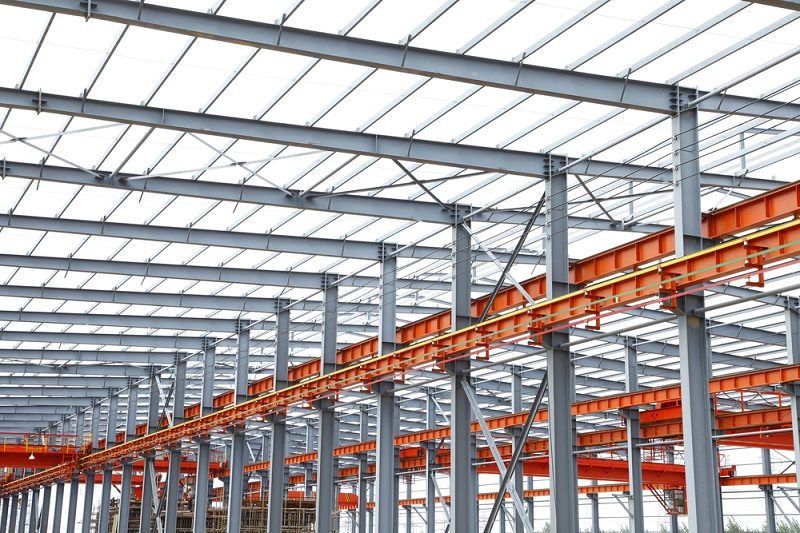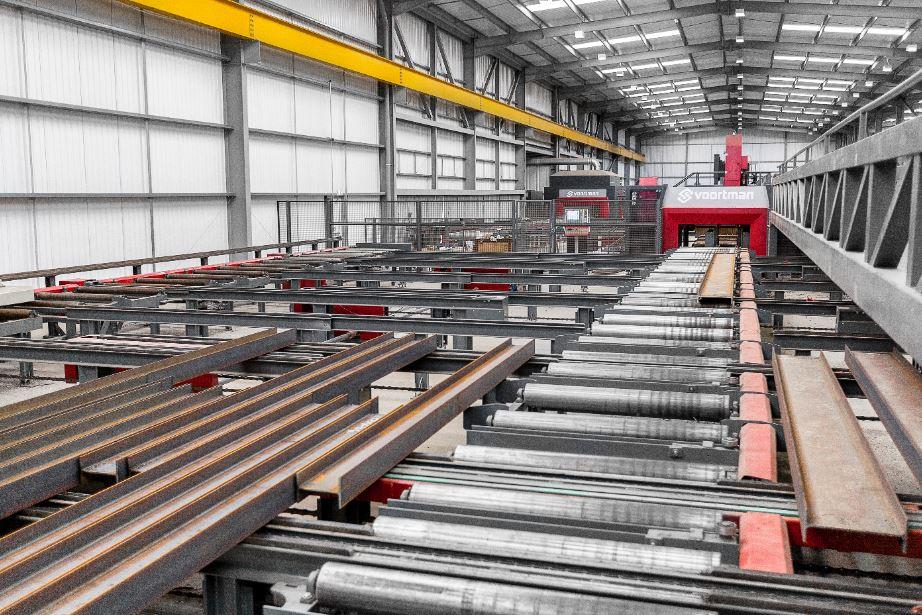Cutting-edge Trends in Steel Construction: Enhancing Toughness and Precision
In the world of steel fabrication, the search of longevity and precision has brought about a wave of ingenious fads that are reshaping the market. From advancements in welding modern technologies to the integration of robot automation in fabrication processes, the landscape of steel manufacturing is evolving rapidly. High-strength alloy advancement, paired with the use of 3D modeling and simulation software, is pushing the limits of what is possible in regards to architectural stability and accuracy. The growing emphasis on sustainable practices in steel production is not only driving effectiveness however likewise promoting a more eco mindful strategy to construction. These patterns are not just shaping the here and now yet likewise laying the foundation for the future of steel fabrication, promising further enhancements in sturdiness and precision.
Advanced Welding Technologies
In the realm of steel construction, the fostering of cutting-edge welding technologies has substantially changed the industry's method to accomplishing remarkable top quality and accuracy in architectural welds. Advanced welding technologies, such as laser beam welding and friction stir welding, have actually arised as game-changers in the area. By leveraging these innovative welding strategies, steel makers can boost the longevity, stamina, and accuracy of their architectural welds, satisfying the progressively requiring demands of contemporary building projects.
Robot Automation in Manufacture
Welcoming robot automation has actually ended up being a foundation of modern steel fabrication practices, streamlining processes and boosting performance across the market. Robots are revolutionizing the method steel elements are manufactured, providing unequaled accuracy and rate while reducing human mistake. These automated systems can deal with repetitive jobs with consistent accuracy, bring about higher top quality output.
One key benefit of robotic automation in steel fabrication is the capability to work all the time without fatigue, significantly raising production result. This continual operation lessens downtime and speeds up task timelines, eventually conserving costs for manufacturers. In addition, robots can be set to execute complex tasks that may be hazardous or challenging for human employees, improving security in the workplace.
Furthermore, robotic automation makes it possible for smooth combination with other electronic technologies, such as computer-aided layout (CAD) software program and Web of Things (IoT) systems (steel fixing). This interconnected method enhances interaction between various phases of fabrication, enhancing operations and making certain real-time tracking and control. As the steel fabrication sector remains to evolve, robot automation stands apart as a transformative pressure driving effectiveness and accuracy in producing procedures

High-Strength Alloy Development
The improvement of high-strength alloy growth in steel fabrication is reshaping the market's method to enhancing product longevity and performance. High-strength alloys are engineered to exhibit remarkable mechanical homes, such as boosted tensile toughness, sturdiness, and corrosion resistance compared to traditional steel grades. By incorporating these sophisticated alloys into construction processes, manufacturers can create elements that stand up to higher tension levels and severe atmospheres, causing more resilient and reputable end items.
One secret benefit of high-strength alloy development is the ability to reduce material density without endangering architectural stability. This not only causes lighter-weight components yet additionally adds to cost savings and enhanced effectiveness in construction and assembly processes. The enhanced strength-to-weight proportion of these alloys enables for the style and construction of frameworks with higher load-bearing abilities while lessening general weight.
3D Modeling and Simulation Software
Developments in steel construction procedures have actually been dramatically propelled by the integration of cutting-edge 3D modeling and simulation software application devices. These tools permit fabricators to produce thorough digital versions of their tasks, allowing them to picture the last item with accuracy steel fabrication melbourne before any type of physical work begins.

Sustainable Practices in Steel Manufacturing
Including sustainable methods into steel manufacturing procedures is necessary for minimizing ecological impact and making certain long-term resource accessibility. One crucial lasting technique is the adoption of energy-efficient innovations to minimize greenhouse gas exhausts throughout the steel production procedure. This includes using renewable resource sources, such as solar or wind power, to power steel plants and carrying out energy-efficient devices to maximize energy use.
Another essential element of sustainable steel production is the accountable sourcing of raw products. This includes making sure that the iron ore and various other resources used in steelmaking are acquired from ecologically friendly and ethical sources. By promoting openness in the supply chain and sticking to rigorous ecological requirements, steel producers can lessen the unfavorable effects of resource removal on regional ecosystems and areas.

Verdict
To conclude, the ingenious fads in steel construction such as sophisticated welding modern technologies, robotic automation, high-strength alloy advancement, 3D modeling and simulation software program, and lasting practices are improving the durability and precision of steel products. These improvements are changing the steel fabrication industry by enhancing performance, sustainability, and quality. It is clear that the future of steel construction depends on welcoming these sophisticated modern technologies to fulfill the needs of contemporary building and manufacturing markets.
In the realm of steel fabrication, the pursuit of resilience and precision has led to a wave of cutting-edge trends that are improving the market.In the realm of steel fabrication, the adoption of sophisticated welding technologies has actually dramatically changed the market's method to achieving premium top quality and accuracy in structural welds. As the steel manufacture market continues to advance, robotic automation stands out as a transformative force driving efficiency and precision in producing processes.
In addition, reusing and reusing steel scrap and waste materials play a considerable function in enhancing the sustainability of steel manufacturing. steel fixing.In final thought, the innovative patterns in steel fabrication such as advanced welding technologies, robot automation, high-strength alloy development, 3D modeling and simulation software program, and sustainable methods are enhancing the sturdiness and precision of steel items